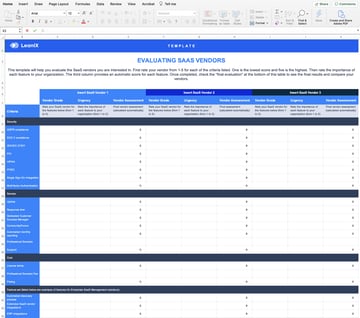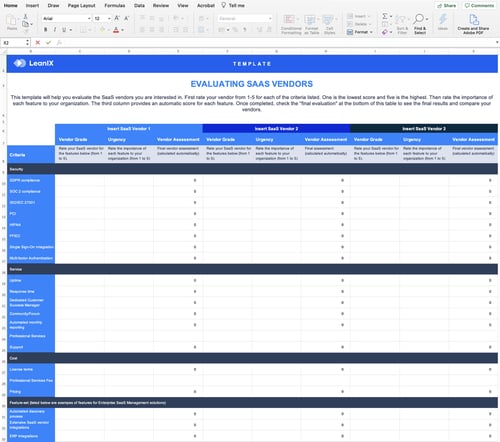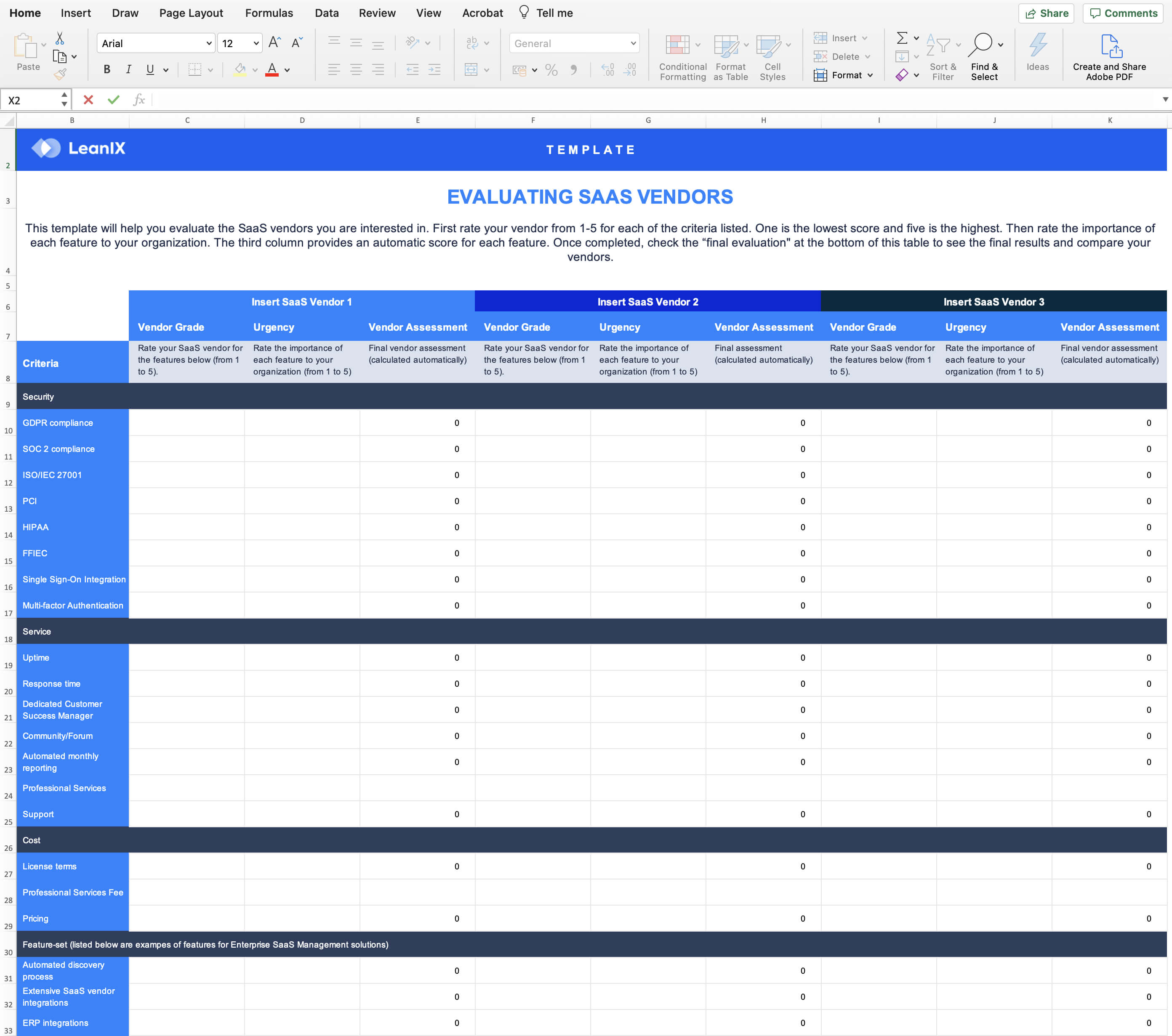Introduction
With more and more companies migrating to the cloud and implementing SaaS technology, the market is quickly adjusting to the increased demand by constantly offering new SaaS products that seem similar in function and features. However, if you look closely, “minor” details like an add-on feature, the subscription and renewal terms, or a security policy can determine whether the software is adding value to your company or just adding to a pile of hidden costs.
So, in order to choose the right cloud-based software that meets your organization’s needs, it is extremely important to conduct a proper SaaS evaluation before onboarding a new vendor. An evaluation starts when an employee has a software request or there is a new business need. Going through the evaluation process will ensure that aspects like functionality, compliance, security demands, service, and cost are met, saving you from future headaches that could have been avoided with a good SaaS evaluation matrix.
Read on and find out how SaaS is evaluated before procurement and how to create your own SaaS evaluation matrix.
How to evaluate a SaaS application?
With increasing digital literacy in any company, shadow IT has become a real issue within many organizations. This lack of oversight also leads to multiple SaaS products with overlapping functionalities.
Before SaaS procurement, make sure that the evaluated product isn’t already being used in your company or whether there is a similar one that could satisfy the respective business need. Sometimes, existing solutions let you add on additional features for a small price increase. In case there is still a need for the new SaaS application, you should establish an evaluation framework that will come in handy for any future SaaS evaluations.
The scope of evaluation depends on the specific tool, business process change, and the data that is processed and stored. Therefore, evaluations can be separated into two scopes:
Limited scope evaluations: Applications that fit into this scope don't affect business processes for the whole organization or departments. These apps are only used by one or a few employees (e.g. social media scheduling app, educational app, etc.)
These evaluations require IT and InfoSec teams to be involved but without the finance team or department leaders since the price tag and risk are usually lower. Below are some basic SaaS information requirements that make the process much easier when an employee requests a new limited scope SaaS evaluation:
- Name of application
- Business purpose
- Contact for approval
- Impact of leak
- Impact of alter/deletion
- Impact when not available
- Due date
Full scope evaluations: Applications that fit into this scope do affect business processes and are used across the organization or within departments (e.g. HR systems, ERPs, CRMs, content management systems, etc.)
During the full scope evaluation stage, it is vital to involve the IT, finance, and information security teams together with end-users (e.g. for marketing applications it can be CMO, director, or managers). They should receive all the relevant information to ensure a swift Software-as-a-Service evaluation.
Each evaluation should follow a risk-based approach to ensure compliance with IT contractual requirements and industry best practices.
The more information your teams receive, the easier and faster the evaluation can be done. Note that the amount of effort and information should align with the criticality and price point of the software product.
In the following, we are detailing 3 critical SaaS selection steps.
1. Involve other stakeholders
As you can imagine, procuring SaaS single-handedly without consulting other stakeholders like InfoSec and legal teams, procurement or IT is not the best idea. After all, unknown SaaS exposes companies to a whole new set of risks that need to be addressed before it’s too late in the game. Always ask yourself who the end-user is and how they will benefit from the new software application.
Whether it’s through surveys, brainstorming sessions, or one-on-one feedback – understanding other stakeholders, their pain points, and the rules they need to comply with, helps speed up the software application evaluation process and the development of a sound evaluation framework. In order to facilitate future changes, negotiations, and administration of the SaaS application, it is also vital to establish the owner of the SaaS product.
2. Determine the purpose of the new SaaS
Needless to say, knowing the business purpose of a new SaaS application is important. After all, understanding the “why” will make it a lot easier to tackle the “how” and thus, eliminate all irrelevant options. Let the following questions guide you through this stage:
- Why do we need this SaaS? / Which business need will it address?
- Who will lead the SaaS evaluation?
- What is the proposed timeline?
- What approvals are needed for the software application evaluation?
As previously mentioned, there might be a good chance that your organization is already using a similar app that could be modified to meet new business needs. Next, learn how to create a software evaluation matrix.





/EN-WP-EA-Tomorrow-Resource_Page_Thumbnail.png?width=260&height=171&name=EN-WP-EA-Tomorrow-Resource_Page_Thumbnail.png)
